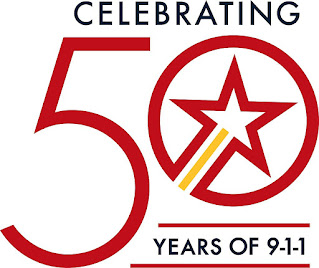 |
| Manual de derrumbes: Una guía para entender todo sobre los derrumbes. USGS |
Manual de derrumbes:Una guía para entender todo sobre los derrumbes
Lynn M. Highland
Servicio Geológico de los Estados Unidos
Peter Bobrowsky
Servicio Geológico del Canadá
Documento: 19762
Título: Manual de derrumbes: una guía para entender todo sobre derrumbes.
Autor: Highland, Lynn M; Bobrowsky, Peter.
Fuente: Denver; Sistema Geológico de los Estados Unidos; 2008. 129 p. ilus, graf.
Descriptores:
DESLIZAMIENTOS DE TIERRA. MITIGACION (REDUCCION O ATENUACION) DEL RIESGO. MEDICION DE RIESGO. ANALISIS DE VULNERABILIDAD. ZONA DE RIESGO. FACTORES DE RIESGO
Agradecimientos
Cómo leer esta guía
Introducción
Para obtener más información
Sección I. Información básica sobre los derrumbes
-Parte A - ¿Qué es un derrumbe?
-Parte B - Principales tipos de derrumbes
-Parte C - ¿Dónde ocurren los derrumbes?
-Parte D -¿Qué causa los derrumbes?
-Parte E - ¿Cuáles son los efectos y consecuencias de los derrumbes
-Parte F - Interrelación de los derrumbes con otros peligros naturales
Sección II. Evaluando y comunicando el peligro de derrumbe
-Parte A - Evaluación del peligro de derrumbe
-Parte B - Comunicación del peligro de derrumbe
Sección III. Conceptos y enfoques para la mitigación
-Parte A - Examen general de los métodos de mitigación para diversos tipos de peligros de derrumbes
-Parte B - Técnicas sencillas de mitigación para el hogar y negocios, administradores y ciudadanos
-Parte C - Lista de trabajos consultados/citados/nombrados y para lecturas más avanzadas
Apéndice A. Información básica sobre derrumbes
- Parte 1. Glosario de términos relativos a los derrumbes
- Parte 2. Partes de un derrumbe: descripción de rasgos/glosario
- Parte 3. Causas de los derrumbes y mecanismos disparadores
Apéndice B. Introducción a las herramientas para la evaluación de los derrumbes: cartografìa, teledetección y control de derrumbes
- Parte 1. Cartografía
- Parte 2. Teledetección y otras herramientas que muestran características de los derrumbes
- Parte 3. Control de derrumbes en tiempo real e instrumentación empleada en los derrumbes
Apéndice C. Introducción a la estabilización y mitigación de derrumbes
- Parte 1. Estabilización/mitigación en la deras de tierra
- Parte 2. Técnicas de estabilización/mitigación de taludes de roca
- Parte 3. Mitigación de corrientes de escombros
Apéndice D. Ejemplo de información sobre seguridad para distribuir en caso de deslizamientos de tierra o corrientes de escombros
MANUAL DE ATENCIÓN AL PARTO EN EL ÁMBITO EXTRAHOSPITALARIO. Ministerio de Sanidad, Servicios Sociales e Igualdad. España
¿Qué es el parto velado "Parto Empelicado" o nacer con bolsa intacta? by NATALBEN.com
Balística de las heridas: introducción para los profesionales de la salud, del derecho, de las ciencias forenses, de las fuerzas armadas y de las fuerzas encargadas de hacer cumplir la ley http://emssolutionsint.blogspot.com/2017/04/balistica-de-las-heridas-introduccion.html
Guía para el manejo médico-quirúrgico de heridos en situación de conflicto armado by CICR http://emssolutionsint.blogspot.com/2017/09/guia-para-el-manejo-medico-quirurgico.html
CIRUGÍA DE GUERRA TRABAJAR CON RECURSOS LIMITADOS EN CONFLICTOS ARMADOS Y OTRAS SITUACIONES DE VIOLENCIA VOLUMEN 1 C. Giannou M. Baldan CICR http://emssolutionsint.blogspot.com.es/2013/01/cirugia-de-guerra-trabajar-con-recursos.html
Manual Suturas, Ligaduras, Nudos y Drenajes. Hospital Donostia, Pais Vasco. España http://emssolutionsint.blogspot.com/2017/09/manual-suturas-ligaduras-nudos-y.html
Manual CIERRE DE HERIDAS by ETHICON http://emssolutionsint.blogspot.com/2017/09/manual-cierre-de-heridas-by-ethicon.html
Manual de suturas. Menarini http://emssolutionsint.blogspot.com/2017/09/manual-de-suturas-menarini.html
Técnicas de Suturas para Enfermería ASEPEYO y 7 tipos de suturas que tienen que conocer estudiantes de medicina http://emssolutionsint.blogspot.com/2015/01/tecnicas-de-suturas-para-enfermeria.html
Cuaderno Enfermero.Cirugia Menor Heridas Suturas http://emssolutionsint.blogspot.com/2016/07/cuaderno-enfermerocirugia-menor-heridas.html
Manual Práctico de Cirugía Menor. Grupo de Cirugia Menor y Dermatologia. Societat Valenciana de Medicina Familiar i Comunitaria http://emssolutionsint.blogspot.com/2013/09/manual-practico-de-cirugia-menor.html
Protocolo de Atencion para Cirugia. Ministerio de Salud Publica Rep. Dominicana. Marzo 2016 http://emssolutionsint.blogspot.com/2016/09/protocolo-de-atencion-para-cirugia.html
Manual de esterilización para centros de salud. Organización Panamericana de la Salud http://emssolutionsint.blogspot.com/2016/07/manual-de-esterilizacion-para-centros.html
6 años de Garantia
Libre de Mantenimiento
El mas ECONOMICO
Vendemos en España y Rep. Dominicana
Hacemos entrega del Sistema Completo
eeiispain@gmail.com
“UNA VIDA NO TIENE PRECIO”
El mas ECONOMICO
Vendemos en España y Rep. Dominicana
Hacemos entrega del Sistema Completo
eeiispain@gmail.com
“UNA VIDA NO TIENE PRECIO”
Medical Doctor for complex and high-risk missions
+34 671 45 40 59

“Medicina Bona Locis Malis”
EU Medical Doctor / Spain 05 21 04184
Advanced Prehospital Trauma Life Support /Tactical Combat Casualty Care TCCC Instructor and Faculty
ACLS EP / PALS American Heart Association and European Resucitation Council Instructor and Faculty
Member SOMA Special Operational Medical Association
Corresponding Member Dominican College of Surgeons
DMO Diving Medical Officer- USA
Air Medical Crew Instructor DOT- USA
Tactical Medical Specialist and Protective Medicine -USA
TECC Tactical Emergency Casualty Care Faculty and Medical Director by C-TECC
My LinkedIn
My Blog EMS SOLUTIONS INTERNATIONAL
Todas nuestras publicaciones sobre Covid-19 en el enlace
AVISO IMPORTANTE A NUESTROS USUARIOS
Este Blog va dirigido a profesionales de la salud y publico en general EMS Solutions International garantiza, en la medida en que puede hacerlo, que los contenidos recomendados y comentados en el portal, lo son por profesionales de la salud. Del mismo modo, los comentarios y valoraciones que cada elemento de información recibe por el resto de usuarios registrados –profesionales y no profesionales-, garantiza la idoneidad y pertinencia de cada contenido.
Es pues, la propia comunidad de usuarios quien certifica la fiabilidad de cada uno de los elementos de información, a través de una tarea continua de refinamiento y valoración por parte de los usuarios.
Si usted encuentra información que considera erronea, le invitamos a hacer efectivo su registro para poder avisar al resto de usuarios y contribuir a la mejora de dicha información.
El objetivo del proyecto es proporcionar información sanitaria de calidad a los individuos, de forma que dicha educación repercuta positivamente en su estado de salud y el de su entorno. De ningún modo los contenidos recomendados en EMS Solutions International están destinados a reemplazar una consulta reglada con un profesional de la salud.









